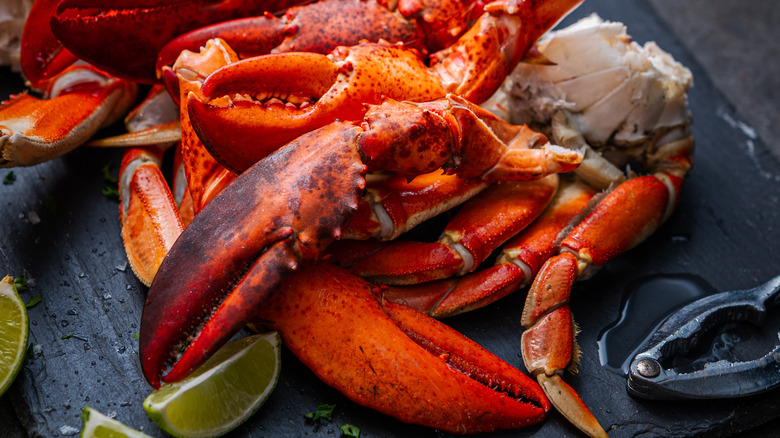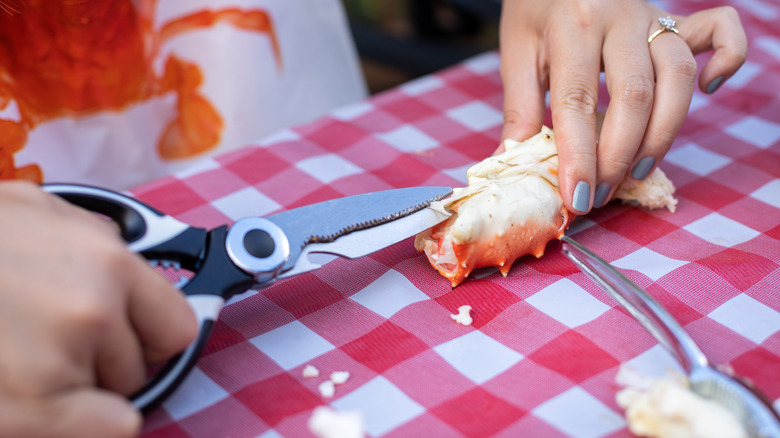How To Remove Even The Smallest Bites Of Lobster Meat From The Shell
With live lobster costing between $35 and $50 per pound and a single lobster roll nearly the same — even in lobster-producing New England — it's no wonder those investing top dollar in the crimson crustacean want to extract every bit of value. That means digging past the meaty claws and tails into the nooks and crevices, where due diligence can pluck out a few more precious morsels for one last soak in the hot-butter pool. The chances are even greater when you've learned how to buy and cook a live lobster properly.
While your fingers and nails can do the dirty work, you may find more success — and lobster meat — when using precision tools like a shell cracker, kitchen shears, and a seafood fork or pick. That's because exposing the under-the-radar repositories takes a bit of finesse, gently coaxing out the meat instead of ham-fistedly pounding and squeezing. That also makes it a good idea to let the lobster cool first for surer handling. Otherwise, attempting the archaeology on a steaming hot lobster may turn slapstick quickly, while burning your fingers to a similar shade.
X marks the lobster spot
The best place to begin discovering lobster treasure is in the "knuckles" that connect the claws to the body. A notoriously tough part of the shell, it can confound the strongest hands, crackers, and shears, so test up and down for a weak spot. While you can crack the knuckle into a pile of shell fragments, you'll do better extracting the meat gently with your poker. Don't forget that rubbery slab of meat in the "thumb" of the claw, either, which can be easily separated by pulling it toward you.
Next, shift to the fins at the tail tip. Each carries a morsel of meat that you can easily reveal by grasping the fin base, twisting, and pulling. The same goes for the meat in the 10 spindly legs along the bottom of the lobster. While using the poker keeps it all elegant, most people simply prefer to bite into them and suck out the meat like marrow. Another great option is to roll out the meat with a pin.
From here, the process gets controversial. The green tomalley — the liver and pancreas mix between the tail and body — gets tossed immediately by most, as does the red roe along the tail in female lobsters. But to others, they are a delicacy to be eaten with the lobster or spread like pate on bread and crackers. It also helps ensure the most bang for your lobster buck and lends pop to your favorite lobster dishes.

